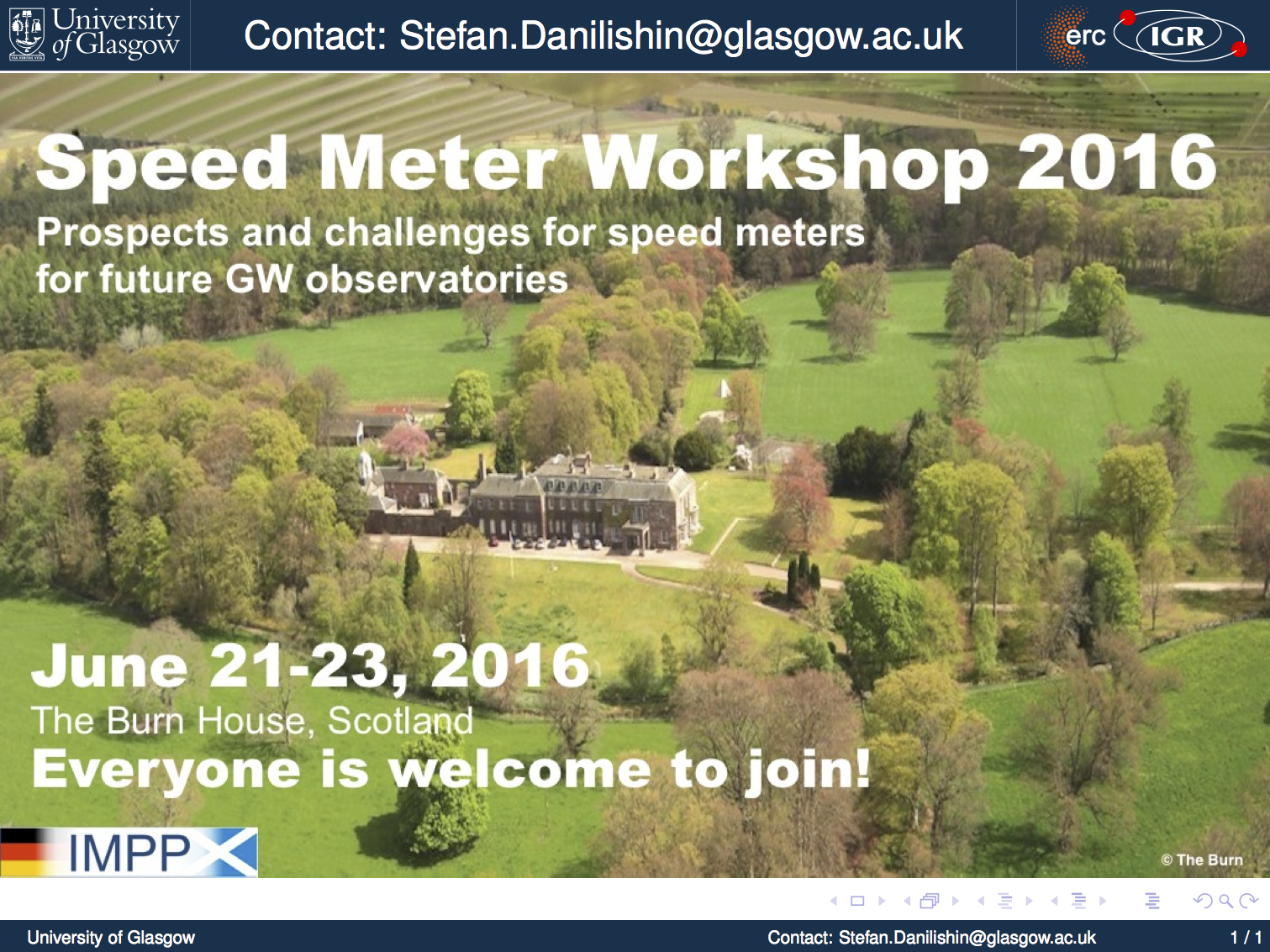Speedmeter Workshop 2016
This workshop was held as described below. There are pictures to prove it!

What: With the first detection of the gravitational waves from the coalescing black holes by Advanced LIGO the era of gravitational astronomy has officially begun. Yet, we shall think about the future and decide what is the best way to improve the next generation detectors quantum noise-limited sensitivity by an order of magnitude compared to aLIGO.
In this workshop we will discuss speed meters, in all their abundant variety, as a particular way to reach these ends. The idea is to gather all interested folks in a nice place (the Burn) for a productive and interesting face-to-face discussions and actual problem formulation and solution finding workshop with the overarching topic of prospects and/or possible show-stoppers on the way to having quantum speed meters as the next generation gravitational-wave interferometers.
When: 21 to 23 of June, 2016. Start at 11:00 am on 21st, departure at 2:30 pm on 23rd.
Where: The venue is the Burn House, a small country estate which offers an escape from the unending demands of the modern world. It is an ideal location for academic retreats and study groups. It is also the perfect setting for getting together with friends and family and the best place for enjoying a short-break in one of Scotland's most secret corners.
Address: Burn House, Glenesk, Brechin, Angus, DD9 7YP, Scotland, UK
How to get there: We will organise the bus to and from the venue for all participants. The bus will depart from the Wolfson Medical Building of the University of Glasgow at 9:00 AM on the 21st of June and will bring all participants back to the same point at ca. 5:00 PM on 23rd of June.
The event is sponsored by the IMPP (International Max-Planck Partnership Scotland)
Suggestions of discussion topics for Speed Meter Workshop 2016
- Prospects of speed meter as the next detector of gravitational waves? Are there any reasons why we should not go on with it?
- Which out of various speed meter configurations shall we go on with:
- Sagnac vs. Sloshing speedmeter?
- Polarisation optics vs. ordinary optics (but w/ring cavities or additional km-long sloshing cavities)?
- Practical considerations:
- How to control the speed meter?
- Scattering and higher order modes from real optics?
- Readout scenarios/concepts?
- Ways to improve speed meter performance by modifying its dynamics (optical springs/negative inertia)?
- Using advanced squeezing techniques with speed meters: any differences compared to Michelson?
- Can you think of the use of speed meters outwith the GW interferometry? Quantum optomechanics/information?
- Have other topics/questions in mind? Please let us know!
